In an African-American city, black clout wanes
DETROIT – Stately, stout Charles Williams II takes the microphone in an old church auditorium on Detroit’s west side and convenes the Saturday rally with a familiar war cry.
“NO JUSTICE!” Rev. Williams shouts, stopping conversations and focusing attention on the front of a smallish room.
“NO PEACE!” yell back some 65 people.
The rally is a weekly meeting of the Detroit chapter of the National Action Network, the nationwide civil rights organization founded by the Rev. Al Sharpton in 1991. Williams heads the local chapter, in addition to serving as pastor of Historic King Solomon Missionary Baptist Church, a renowned house of worship that now needs repairs, located a few blocks from the Motown Museum on the city’s west side.
There are several items on the agenda, and Williams touches on issues that have driven the group into Detroit’s streets in the recent past: home foreclosures; water shutoffs; Michigan’s emergency manager law; the city’s bankruptcy and cutbacks to pensioners; violence; Flint’s water crisis; and Mayor Mike Duggan.
While Duggan has a positive image among many Detroiters, suburbanites and the local media as a commanding Mr. Fixit who is shoring up the city as it recovers from bankruptcy, the view at King Solomon on this Saturday morning is considerably more skeptical.
Williams, 35, who sometimes calls Duggan “Livonia Mike” – a sarcastic reference to the white mayor’s longtime suburban home before he moved into Detroit to run for mayor – tells the crowd Duggan has invited him to his office for a meeting, but he’s having second thoughts about attending.
Switching into preaching cadence, Williams says, “We have to make sure we hold them folks accountable,” as the audience cheers. “So I may not do no backroom meeting. I may have to tell him to come here, in the front row. That might be the better way to deal with him, and to make sure he has an opportunity to hear what people are saying.
“Because what happens is, you’ve got folks who go around insulating him. And you’ve got black folks who go around insulating him.”
To laughter and hoots from the crowd, Williams pretends he is the mayor, talking to his acolytes:
“Do they like me?”
Playing Duggan’s admirer, Williams answer himself: “Yeah, Everybody likes you.” You’re the best mayor ever.”
Turning serious, Williams says, “We will have him here. We will address him. And we will address him straight up. We’re not going to play no games. This is not a moment for playing games.”
Power to the people
This is indeed a fraught moment for Detroit. The city’s short-term financial recovery, newly lit streetlights and restaurants that serve celery root Agnolotti in a short rib ragu have attracted a burst of positive international attention. Locally, Detroit has become so cool in some quarters that suburbanites who repeat the once-familiar boast that they haven’t ventured downtown in years come across as tone-deaf dinosaurs.
But to many black residents, the resurgence around downtown, while welcome, has done little to lift the despair that permeates desolate corners of their sprawling city. In their view, the rehabbed condos, rising hockey arena and farm-to-table dining establishments in the Woodward Avenue corridor cater to the pleasure of the young, mostly white professionals who have returned to live, work or party downtown.
African Americans may now control who’s elected mayor or to city council in this predominantly black city. But nearly 50 years after racial despair led to deadly insurrection and rioting, a view persists that white political and business interests (in Lansing, and in more affluent surrounding counties) continue to steer the city’s course.
It is against this backdrop ‒ and the national "Black Lives Matter" protests ‒ that Williams’s group and other activist organizations, most of which have formed in the past few years, have stormed onto city streets with a militancy and drama that recall the days immediately following the events of 1967, even if their gains are harder to gauge.
Back then, the city brimmed with aggressively radical organizations of blacks and whites such as the West Central Organization (focusing on urban renewal and school desegregation): State of Emergency Committee and Ad Hoc Committee (police); League of Black Revolutionary Workers and Dodge Revolutionary Union Movement (labor); Shrine of the Black Madonna (black nationalism); Parents and Students for Community Control (schools) and Marxist, Trotskyist and Maoist groups.
As one economist later told the Kerner Commission, convened by President Lyndon B. Johnson to examine the cause of racial uprisings in Detroit and elsewhere in 1967, “black power” groups had come to conclude that despite the gains of the civil rights movement, blacks had “not experienced tangible benefits in a significant way.” Real change could only come about when blacks united as a political force.
That meant “organizing a black political party or controlling the political machinery within the ghetto without the guidance or support of white politicians,” the Kerner report noted, on the belief among these groups that “only a well-organized and cohesive bloc of Negro voters could provide for the needs of the black masses.”
Heather Ann Thompson, a history professor at the University of Michigan who grew up in Detroit, wrote in her 2001 book, “Whose Detroit?” that radicals, conservatives and liberals slugged it out for their vision of the city, and “Detroit became a war zone” following 1967.
Detroit police were a particular target for ‘60s-era radicals. Black Detroiters had long viewed the overwhelmingly white DPD as an army of occupation, and, under Mayor Roman Gribbs in the early 1970s, the department unleashed an undercover decoy squad called STRESS – Stop the Robberies, Enjoy Safe Streets – that in its first nine months of operation killed 10 suspects, nine of them black. Led by Marxist attorney Kenneth Cockrel Sr., Detroiters organized marches, rallies and media campaigns to get rid of the unit.
One of the results of those marches and proselytizing was the transformative election of Coleman Young as Detroit’s first black mayor in 1974.
Today’s activists are attempting to address some of the same issues – neighborhood revitalization, education, poverty, racism and jobs. They are demanding social and economic justice for neighborhoods eviscerated by 60 years of white flight, business disinvestment, crime, drugs and government indifference.
Yet while many concerns, hauntingly, remain the same, the context has changed: Black Detroiters made up more than 40 percent of the city’s population after the events of 1967, but had little presence or say in city government. A large part of the dissension then revolved around getting a seat at the table.
Today, blacks are routinely elected to leadership positions, while filling nearly every level of city government. The irony is that, through a variety of factors from Detroit’s shrinking population to what residents perceive as the state legislature’s barely disguised antipathy toward the city, Detroit’s political leaders don’t carry nearly the clout they wielded in 1967.
The new generation of community activists is trying to fill that void.
One group, New Era Detroit, a highly disciplined, black-nationalist organization, in November blockaded a Detroit gas station whose employee, the group said, harassed a young African-American boy.
On Christmas Day, New Era members stood in military formation in front of the police headquarters in neighboring Dearborn, to protest the shooting of an unarmed black man by a white Dearborn police officer who had chased the man across the border into Detroit. Their red, black and green Pan-African flag flapped in the wind. In the new year, New Era returned to Dearborn to call for a boycott of the Fairlane Town Center mall and gathered at city hall, standing in well-organized ranks, fists sometimes thrust in the air, rapidly and loudly chanting a slogan made popular by the Black Panthers: “ALL POWER TO THE PEOPLE!”
It is, in many ways, the same potent demand for black power that activists painted on buildings and streets during and after 1967. Black power became a reality in Detroit in many ways in the years that followed, as a cadre of young, idealistic African Americans – and a number of white lawyers and activists – changed the jury-selection process in Detroit’s criminal court to include more black jurors; confronted the brutality of the Detroit police, and, most importantly, elected Young.
Young’s election demonstrated – for the first time – what black Detroiters were capable of achieving once they were given the reins of government At a time of extreme racial polarization, Young recognized his election was made possible by the white evacuation that eventually gave Detroit the most unusual demographics of any large American city – by 2000, more than 8-in-10 residents were African American.
White Detroiters, Young observed, “were getting the hell out, more than happy to turn over their troubles to a black sucker like me.”
As Young noted in his 1994 autobiography, “White people not only lost control of Detroit, but find it, as a rule, racially foreign and consequently frightening.”
Young’s assessment was fueled by the often caustic rhetoric and Detroit bashing from suburban residents and leaders over the years, personified in the obstructionism and criticism of L. Brooks Patterson, the longtime Oakland County Executive. “I don’t give a damn about Detroit,” he was once famously quoted as saying.
A changing landscape
Today, the long-hardened boundaries between city and suburbs – long symbolized by 8 Mile Road – are slowly blurring. In some ways the city is becoming suburbanized, and the suburbs are becoming urbanized. That can be seen as a mostly positive development but one that’s also had the effect of diluting the influence of city leaders in some ways.
In one remarkable reversal, white people are beginning to move into the city, even as African Americans who can afford to continue to move out, according to U.S. Census data, though Detroit remains overwhelmingly black.
Detroit’s suburbs, even such one-time bastions of segregation as Dearborn to the west and the Grosse Pointes to the east, are increasingly diverse, which contributes to a lowering of the temperature of anti-Detroit rhetoric. Even so, some observers note a scarcity of African Americans in Detroit’s burgeoning shopping and entertainment spots, which in turn has ignited a sometimes contentious debate over why that is so, or even if it is true.
No one in Young’s day would have predicted how, in the early 21st Century, suburbia would produce Detroit’s last two mayors: Duggan, who is white, and Dave Bing, who is black. Both moved into Detroit after decades in the suburbs for the sole purpose of running for office. At the same time, many of Duggan’s top appointees live outside the city, which would have been unheard of – and against a now-defunct residency ordinance – 25 years ago.
More recently, regionalization initiatives have diminished the mayor’s power, driven largely by the city’s financial crisis. After decades of bickering, a drive to regionalize services and institutions once controlled by Detroit has become a fait accompli in some important ways: The operations of the Cobo convention center, the zoo, museums, city water department and Eastern Market are now run by authorities and nonprofits with boards made up of Detroiters and suburbanites. The state has run the island park of Belle Isle for more than a year. And millages passed by suburban residents in Wayne, Oakland and Macomb counties in the past decade help support the Detroit Institute of Arts and Detroit Zoo.
Mayor Young often referred to many of these landmarks as Detroit’s “jewels,” which he vowed never to relinquish, though the city still owns them all.
Two worlds, divided
Despite the gradual improvement of Detroit’s image and city-suburban relationship, one fact hasn’t changed since 1967: Too many black Detroiters remain impoverished, unskilled, badly educated and alienated from the improvements in the city’s core. By several statistical measurements, conditions for black Detroiters have not improved in the nearly 50 years since the riot.
“It’s gotten worse,” argues Joe T. Darden, a Michigan State University geography professor who has studied Detroit for years. “Change has been in the opposite direction, not in the direction it should have been.”
Two crises, the Flint water emergency and the financial and physical deterioration of Detroit and its schools, have trained a national spotlight on state government’s indifference toward poor, black city residents, according to activists like Rev. Williams.
Williams said corporate interests downtown, led by Quicken Loans founder Dan Gilbert and Little Caesars Pizza owner Mike Ilitch, who also owns the Detroit Tigers, Red Wings and the Fox Theatre, appear to be thriving, with companies controlled by both men gobbling buildings and real estate in downtown and Midtown.
Williams acknowledges that corporations must flourish in a healthy economy. But he said the gap between haves and have-nots in Detroit appears to be widening, and outside greater downtown “there are plenty of people who are still not being able to enjoy the boost or boom that the city of Detroit is supposedly in.”
“I think many Detroiters are feeling this,” he said. “It can’t be so one-sided.”
In some ways, criticism of Duggan – who has served just over two years as mayor – reflects the decades-old imbalance between downtown and neighborhoods and the even older inequity between white and black wealth in the United States. Duggan has made neighborhood improvement the main focus from the first day of his campaign, and his administration has shown results in turning on street lights, demolishing abandoned structures, cleaning up city parks and making it easier to purchase and pay taxes on houses.
Duggan declined to comment for this story.
Darden, the MSU professor, acknowledged the mayor's accomplishments, but noted there has been far less business investment in neighborhoods outside downtown and, despite the presence of many African-American business people and professionals, almost no black Detroiter with vast wealth who is making a major mark on the city.
That imbalance is on vivid display as suburban billionaires Gilbert and Ilitch, who are white, remake downtown with investments and projects that are widely praised, and in the case of Ilitch’s new hockey arena, partially supported by the public.
“Detroit is not controlled by African Americans. Never has been, and it’s still not,” Darden said. “The white population controls the city. They own it, pretty much. Blacks don’t own it. They’re there, but they don’t own the place.”
In February, Bing, the former mayor, entered the fray, saying there was a growing frustration in the African-American community with a lack of black involvement in Detroit's comeback.
"As much as we say or think we are being inclusive, the reality is we are not," Bing told a policy conference of the Detroit Regional Chamber. "Detroit's not far from Ferguson, Baltimore or Chicago. Maybe just an incident away."
Still, many black Detroiters appear more confident in the future, a contrast from their feelings before the city entered bankruptcy in 2013, with roughly 7-in-10 recently polled by the Detroit Free Press saying they are optimistic about the city’s future.
Even on combustible issues like whether the state should continue to have oversight of the city’s fiscal affairs, there is no consensus among residents.
The Rev. David Alexander Bullock, who leads the three-year-old social justice organization Change Agent Consortium, said he sees a large divide between African Americans who are economically comfortable and those who are poor. In his view, more comfortable black Detroiters and suburbanites are generally unmotivated to go to bat for struggling African-American residents, who in turn are too busy fighting for survival to mobilize politically.
“There are really three groups of blacks,” said Bullock, pastor of Greater St. Matthew Baptist Church in Highland Park, and a star of the Oxygen network’s “Preachers of Detroit” reality show last year.
“There are elite blacks; the formerly middle class blacks who are barely middle class, and their children and grandchildren; and the blacks that nobody wants ‒ the mentally ill, the people who are constantly going in and out of prison, the folks that can’t read.
“There’s about 150,000 of those in Detroit. Nobody wants them. You could build a boat. Somebody would pay to get those folks on that boat.”
Many well-off blacks have adopted “a politics of accommodation,” Bullock said, because they feel they’ve made it. Regionalizing Detroit’s cultural institutions and services may not be in the interest of Detroit residents, he said, but not enough people who had the power to complain did so.
“If you had a stronger protest movement in Detroit many of those things would not have happened,” Bullock said.
Of course, not all residents that activists are attempting to mobilize necessarily object to the changes reshaping their city. Indeed, many Detroiters share the view that Belle Isle, Eastern Market, the museums and Cobo are better financed and in better shape today than when they were controlled exclusively by the cash-strapped city.
In the Free Press poll, published in December, a year after city bankruptcy ended, more than half of city residents said conditions had improved. They gave high marks to Duggan and Police Chief James Craig, a media-genic executive under whom some crime has dropped and police emergency response times appear to have improved (though 43 percent said they would leave Detroit if they could afford to).
Sheila Cockrel, a business consultant and Wayne State University instructor who is a former member of the Detroit City Council, said it’s important to note that Detroit continues to own the “jewels” that are now under a more regionalized control. She argues the arrangements make sense for the city – still struggling financially despite emerging from bankruptcy – and its residents.
“You really don’t have the tax base in Detroit” to properly maintain those institutions, Cockrel said. “You don’t have the resources. So you come up with strategies. You’re getting other people to pay for something that you own. How isn’t that a true exercise of true power? Of economic power?”
Power on the wane
If Coleman Young’s election marked the apex of black political power, the years following his death have corresponded with a decline in the authority and power granted to Detroit mayors.
Young entered office vowing to reform police and give black Detroiters a voice in city government that they never had before. And he delivered.
Young dismantled the despised police STRESS unit and established affirmative action programs in the DPD and other city departments. To establish community-based policing, Young opened mini-stations in dozens of neighborhoods, and saw that city contracts were spread out to black businesspeople, who largely had been shut out before a black man became the boss at city hall.
While Young could be abrasive and profane, and he alienated whites by bringing up the problem of racism in metro Detroit, he was an integrationist who had a diverse team of appointees and generally preached the necessity of racial unity.
Even as he called for harmony, Young also communicated the idea of black pride to Detroiters. During election campaigns, he sometimes spoke in a coded racial language about how “we” have fought to maintain the city in the face of outside oppression and how “they” (that is, suburban whites) want to control the city and steal the “jewels.” He defended even legitimate criticism of the police department as attacks on affirmative action. He cracked down on city workers, especially white cops and firefighters, who violated the city’s residency requirement.
Young decided not to run for a sixth term in 1993 after 20 years in office. He died in 1997, and some argue that an era of strong black political power died with him.
That same year, the state legislature abolished Recorder’s Court, Detroit’s criminal court since 1824, and ordered its judges and staff merged with the court system of surrounding Wayne County, which was mostly white. In 1998, management of the Detroit Institute of Arts was spun off to the Founders Society, the longtime nonprofit associated with the museum.
In 1999, acting on pleas of mainly white cops and firefighters, the state legislature ended Detroit’s decades-long rule that required city workers to live in the city, a move that accelerated flight to the suburbs and, with it, the loss of desperately needed tax revenue. Detroit’s other institutions were reorganized in the ensuing years.
Other decisions coming from Lansing also rankled, from steep cuts in state aid to, most notably, the state’s decision to appoint an emergency manager for Detroit before the city sought federal bankruptcy protection.
A new era
Times have changed since the civil rights battles of the 1960s and 70s, and so have the activists seeking to change Detroit today.
With thick-rimmed glasses, a studious appearance and well-tailored suits, Rev. Williams blends in with the crowd at the Detroit Athletic Club, where he is a member. Once a fussy citadel of WASP-ish privilege, the DAC, like virtually all institutions in Detroit, was whites-only until the 1970s. The DAC admitted its first black member in 1979 ‒ Robert P. Young Jr., now chief justice of the Michigan Supreme Court.
Rev. Williams was born the next year in Henry Ford Hospital in Detroit, but his family moved four years later to Birmingham, Alabama, where his father, a postal worker, had been transferred. Williams said the seeds of his activism were sown as he grew up reading about the civil rights movement, and a personal experience when he was 12 while shopping with his mother in an Alabama fabric store.
“There were two white ladies, and I was standing next to my mother,” he recalled. “The one white lady sees me and whispered to the other lady, ‘Watch your purse.’
“Right in front of me! I saw that. And I felt that feeling. For the first time in my life, really, and after that I became hyper-sensitive to it and I see it all the time.”
Williams returned to Michigan for college at Eastern Michigan University, where he started working with Sharpton’s National Action Network around the issue of affirmative action in education. He later worked in labor and community organizations before deciding to become a minister.
His church, Historic King Solomon Baptist Church on 14th Street, was the site of speeches by both the Rev. Martin Luther King, Jr. and Malcolm X.
Williams contends that a lot of the issues in Detroit are explained as race issues, but they are actually more about class. But the racial angle prevents needy people of both races from working together.
“My mission is not necessarily to be a race leader or a race baiter or a race this or a race that. The mission is to make sure everybody has a chance to be taken care of. And that everybody gets access and opportunity."
It’s why Williams used Mayor Duggan as a foil during his Saturday rally, and attacked wealthy white business people who received tax breaks, public financing and breaks on their water bills, even as impoverished black residents have had their drinking water turned off.
“How many black businessmen and women do you know out here that have the opportunity to buy property, assemble real estate?” Williams asked that morning. “They ain’t getting no deal on their taxes.”
The crowd urged him on: “That’s right!”
“I ain’t doing no play time,” the reverend said to the mayor who wasn’t there.
“‘Do you think I’m doing a good job?’
“NO!" the crowd answered.
“If you want to talk to me,” the reverend said, “then you’re going to hear what you don’t want to hear.”
Lester Graham of Michigan Radio contributed to this report
See what new members are saying about why they donated to Bridge Michigan:
- “In order for this information to be accurate and unbiased it must be underwritten by its readers, not by special interests.” - Larry S.
- “Not many other media sources report on the topics Bridge does.” - Susan B.
- “Your journalism is outstanding and rare these days.” - Mark S.
If you want to ensure the future of nonpartisan, nonprofit Michigan journalism, please become a member today. You, too, will be asked why you donated and maybe we'll feature your quote next time!


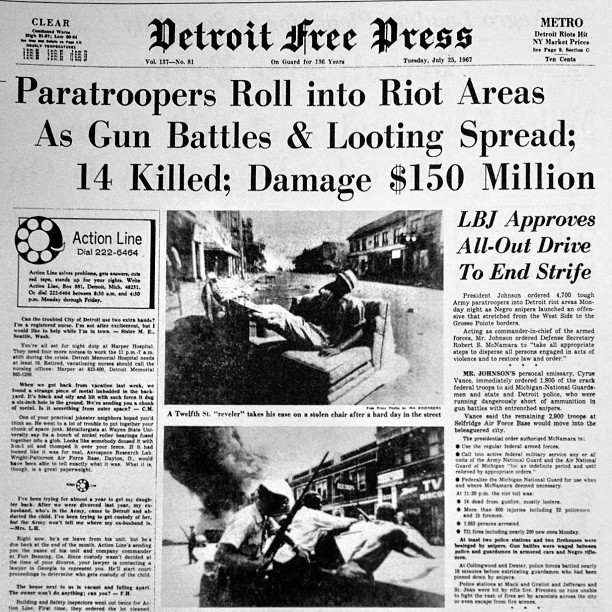
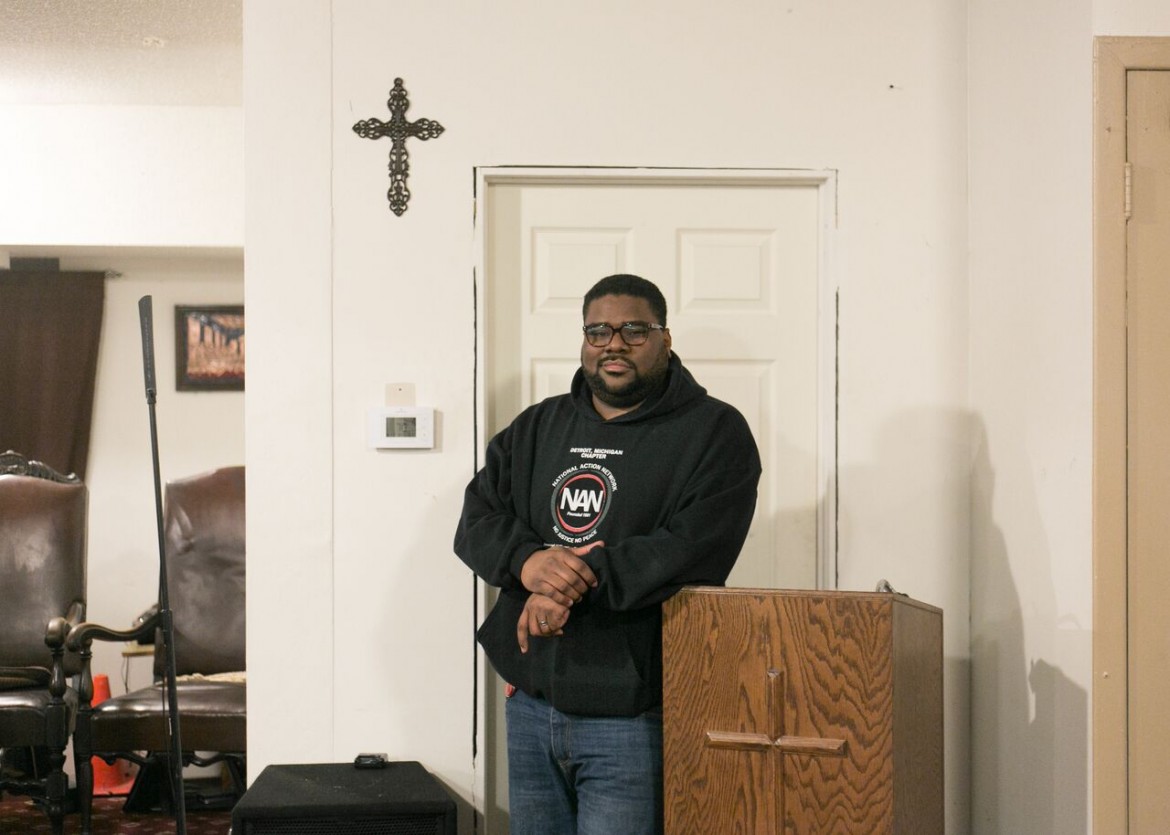 Rev. Charles Williams II, president of the National Action Network Michigan Chapter, had tough words for Mayor Mike Duggan at a Saturday rally at Historic King Solomon Church in Detroit. (Bridge photo by Brian Widdis)
Rev. Charles Williams II, president of the National Action Network Michigan Chapter, had tough words for Mayor Mike Duggan at a Saturday rally at Historic King Solomon Church in Detroit. (Bridge photo by Brian Widdis)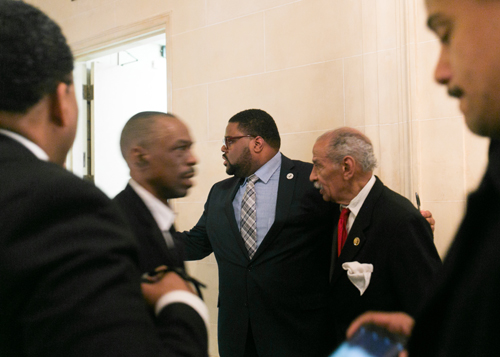 Rev. Charles Williams II, center left, ushers U.S. Rep. John Conyers through the crowd at the National Action Network Michigan Chapter's Dream Keepers Brunch and Award Ceremony in January at the Detroit Athletic Club, one of many venues in the city that were not welcoming to blacks in 1967. (Bridge photo by Brian Widdis)
Rev. Charles Williams II, center left, ushers U.S. Rep. John Conyers through the crowd at the National Action Network Michigan Chapter's Dream Keepers Brunch and Award Ceremony in January at the Detroit Athletic Club, one of many venues in the city that were not welcoming to blacks in 1967. (Bridge photo by Brian Widdis)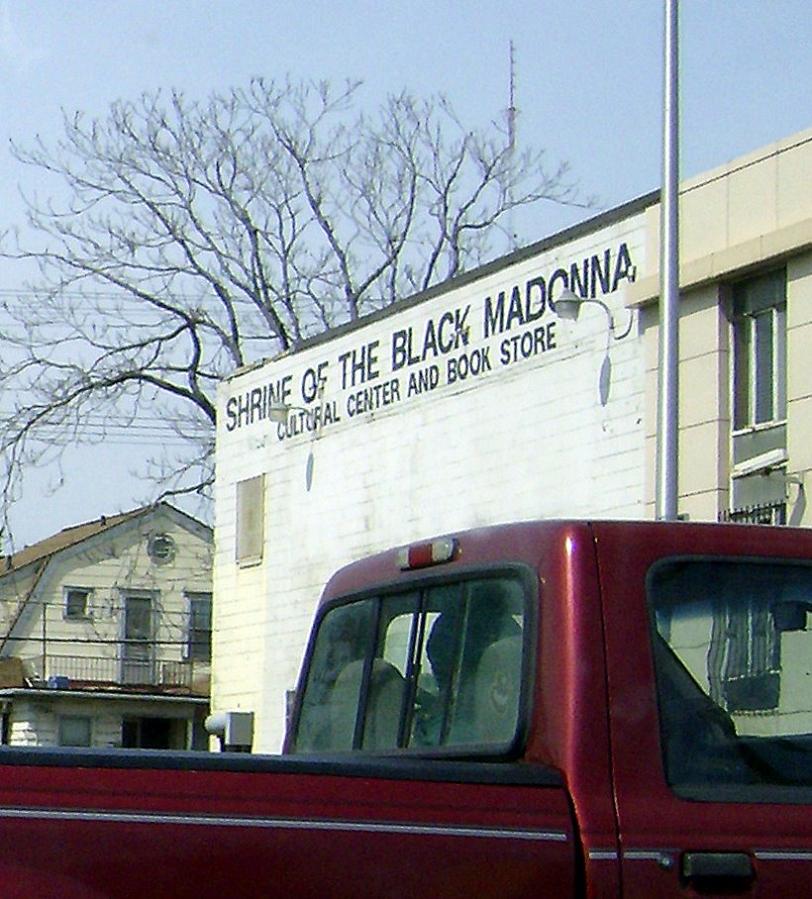 The Shrine of the Black Madonna in Detroit promoted black nationalism and was one of many groups active in trying to foster political change in 1967. (Photo from Wikimedia, via Creative Commons)
The Shrine of the Black Madonna in Detroit promoted black nationalism and was one of many groups active in trying to foster political change in 1967. (Photo from Wikimedia, via Creative Commons)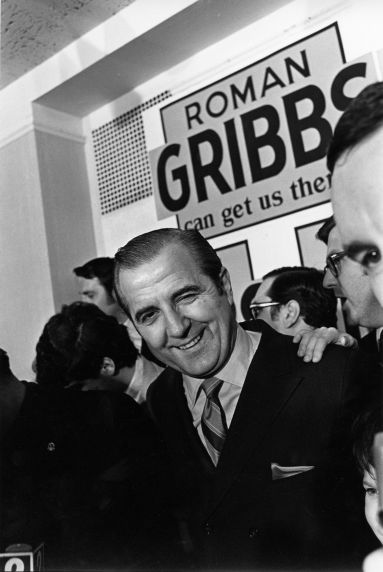 Detroit Mayor Roman Gribbs, who served from 1970-74, oversaw the police department when it created an undercover unit known as STRESS, which was widely despised by the black community.
Detroit Mayor Roman Gribbs, who served from 1970-74, oversaw the police department when it created an undercover unit known as STRESS, which was widely despised by the black community. Coleman Young, Mayor of Detroit
Coleman Young, Mayor of Detroit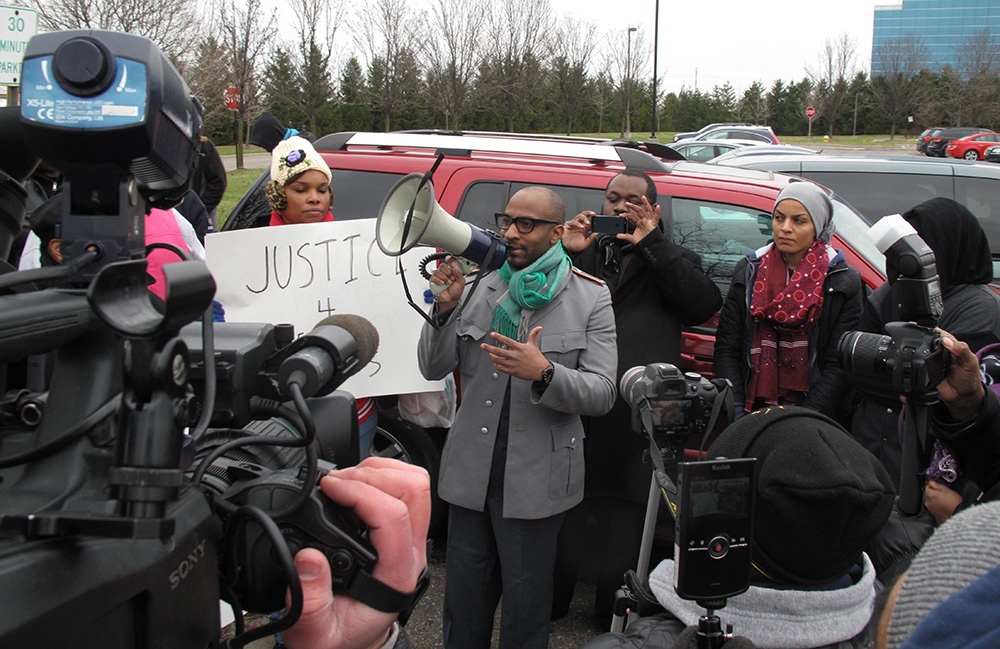 The Rev. David Alexander Bullock leading a protest outside Dearborn police headquarters three days after a white Dearborn police officer shot and killed an unarmed black Detroiter he had chased across the border into Detroit. (Bridge photo by Bill McGraw)
The Rev. David Alexander Bullock leading a protest outside Dearborn police headquarters three days after a white Dearborn police officer shot and killed an unarmed black Detroiter he had chased across the border into Detroit. (Bridge photo by Bill McGraw)